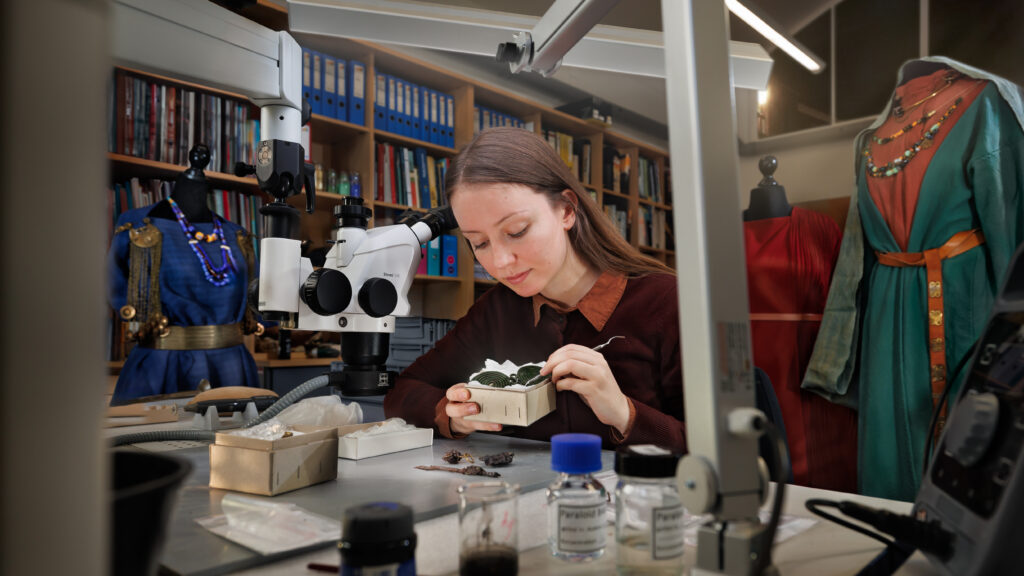It is hard to imagine our world without textiles – used in technology, our homes, work, and of course clothing. This has been the case in many cultures over thousands of years, and especially clothing has always been used as a display of one’s identity. However, much has changed in the production of textiles, especially in the last 200 years, leading it to be one of the most environmentally harmful industries.
I am a student of Prehistory and Historical Archaeology at the University of Vienna, which offers courses dealing with a vast array of topics from the beginnings of humanity to recent history, from aspects of zoology to experimental crafts. Due to my interests in identity, materials, cultural anthropology, and handcrafts, I chose to focus on textiles and clothing in archaeology. Currently I am working on my master’s thesis, where I am analysing remains of textiles and leather that are preserved on metal objects in inhumation burials of the Early Medieval Avar period. Though they are small and inconspicuous, it is possible to gather a lot of information on the materials, technologies, and functions, for example, using different methods of microscopy and microstratigraphy. These findings can answer questions of culturally specific production, clothing, and burial practices, for example.
Furthermore, I conduct textile research outside of my thesis, mostly at the Natural History Museum Vienna, but also directly at archaeological excavations or other museums. This has allowed me to gain many insights into the world of research internationally, also thanks to the COST Action Euroweb. Asides from research and reconstructing textiles, I find science communication to be an essential activity. With our knowledge gained in textile archaeology, we can communicate to the public many different aspects, that are relevant to the present and the future:
- How much care was taken to repair and recycle textiles 3000 years ago versus fast fashion today
- How long it used to take to produce textiles
- How headscarves were part of so many woman’s costumes in European (pre-)history
- How clothing is tied to identity and certain items are prejudiced
- and how people have always taken interest in how they looked
Textile archaeology is only one of many niches one can specialise in this field. For studying Prehistory and Historical Archaeology in general, it is beneficial to bring an interest in fieldwork, i. e. excavations, though this does not mean that is necessary practise hard manual labour to be successful. What is definitely necessary is an interest in the cultures of past societies and teamwork, as we need collaborate with many different disciplines. A wide range of interests can be incorporated into archaeology, be it handcrafts or natural sciences – and just about all other fields of study. But no matter what interest, one should definitely not shy away from libraries!
Human Kayleigh is studying Prehistory and Historical Archaeology (Master) at the University of Vienna. You can find her recent publications here.
Want to read more about history and culture? Check out Rudolphina, the research magazine




